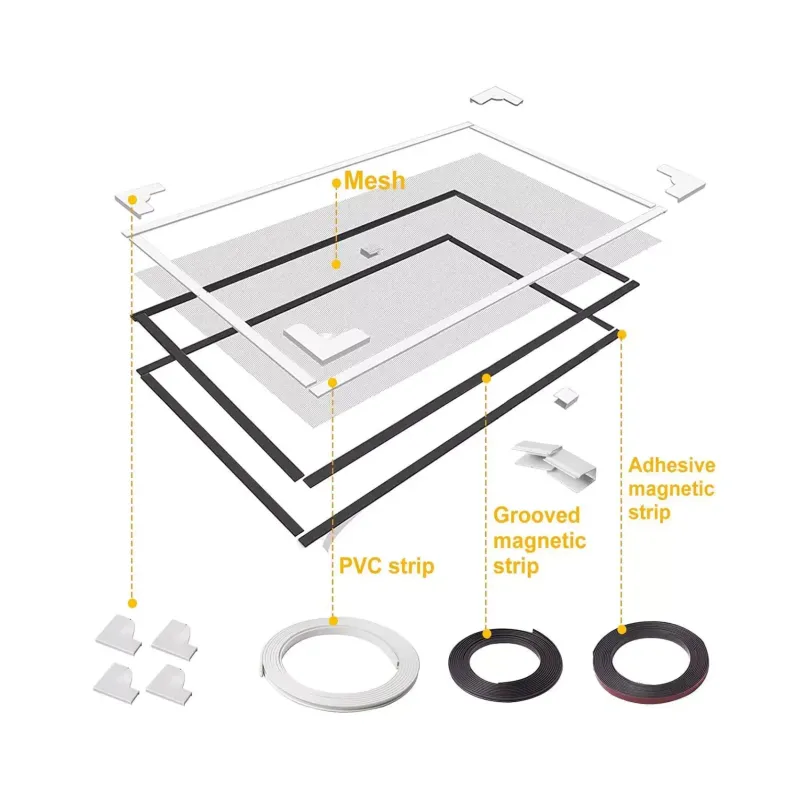Dec . 06, 2024 02:11 Back to list
mosquito fly net
The Importance of Mosquito Fly Nets in Global Health
Mosquitoes are not just pesky insects; they are vectors for numerous diseases that threaten public health worldwide. From malaria to dengue fever, these tiny creatures carry pathogens that cause significant illness and even death in various populations. As a preventive measure, mosquito fly nets have emerged as a vital tool in the fight against these diseases, especially in areas where these insects are rampant. The significance of mosquito fly nets extends beyond mere comfort; they are an essential component of global health initiatives aimed at reducing the incidence of mosquito-borne diseases.
Understanding Mosquito-Borne Diseases
Mosquito-borne diseases affect millions of people every year. Malaria, caused by protozoan parasites transmitted through Anopheles mosquitoes, remains a leading cause of morbidity and mortality in tropical regions. According to the World Health Organization (WHO), there were approximately 241 million cases of malaria worldwide in 2020. Other significant diseases include dengue fever, Zika virus, and West Nile virus, all of which can lead to severe health complications.
The impact of these diseases stretches beyond individual health; they have socio-economic implications as well. In regions plagued by malaria, for instance, the loss of productivity due to illness can cripple local economies, burden healthcare systems, and hinder educational attainment. With so much at stake, innovative and effective prevention strategies are essential.
The Role of Mosquito Fly Nets
Mosquito fly nets, especially treated bed nets, play a crucial role in protecting populations at risk. These nets are usually made from lightweight, durable materials and are often coated with insecticide, which repels or kills mosquitoes on contact. The use of insecticide-treated nets (ITNs) has been shown to significantly reduce the incidence of malaria and other mosquito-borne diseases in endemic regions.
One of the primary advantages of using mosquito fly nets is their simplicity and effectiveness. They provide a physical barrier between an individual and the mosquitoes, especially during the night when these insects are most active. Studies have indicated that sleeping under ITNs can reduce malaria transmission by over 50% in some areas, showcasing their effectiveness in safeguarding health.
mosquito fly net

Global Initiatives and Access
Recognizing the importance of mosquito fly nets, various global health organizations, including the WHO and the United Nations International Children's Emergency Fund (UNICEF), have launched initiatives to distribute these nets to vulnerable populations. Programs targeting children and pregnant women, who are particularly at risk, aim to provide access to ICTs, ensuring that those who need protection the most can receive it.
The distribution of mosquito fly nets is often coupled with educational campaigns that inform communities about the importance of using these nets consistently and properly. This dual approach not only boosts immediate protection but also contributes to long-term behavioral changes that are essential for sustained health improvements.
Challenges and Future Directions
While mosquito fly nets are undoubtedly effective, there are challenges associated with their widespread use. One such challenge is insecticide resistance, which can diminish the efficacy of ITNs over time. Resistance management strategies, including rotating different classes of insecticides and incorporating new technologies, are essential to ensure that mosquito nets remain a reliable source of protection.
Moreover, the sustainability of net distribution programs is crucial. Dependence on external funding can lead to inconsistencies in availability. Transitioning to locally sourced materials and empowering communities to produce and maintain their own nets could provide a more sustainable solution.
Conclusion
In conclusion, mosquito fly nets are a critical line of defense against mosquito-borne diseases. Their effectiveness in reducing the transmission of diseases like malaria and dengue is supported by extensive research and real-world application. As global health challenges continue to evolve, the need for innovative and adaptable solutions remains. Investing in mosquito fly nets and ensuring their sustainable distribution is not just a public health strategy; it is a commitment to the health and well-being of populations at risk. By prioritizing such initiatives, we can work towards a world where vector-borne diseases are no longer a significant threat.
Products
Latest news
-
Unveiling the Allure and Practicality of Classic Mosquito Nets
NewsJul.04,2025 -
Unraveling the World of Mosquito Nets: Varieties, Costs, and Production
NewsJul.04,2025 -
Redefining Protection and Style: The World of Mosquito Nets
NewsJul.04,2025 -
Enhancing Sleep and Style with Contemporary Mosquito Nets
NewsJul.04,2025 -
Diverse Solutions in Mosquito Netting: Sizes, Varieties, and Flexibility
NewsJul.04,2025 -
Deciphering Mosquito Nets: Significance, Varieties, and Applications
NewsJul.04,2025 -
Transforming Bedrooms into Mosquito - Free Havens
NewsJul.01,2025









